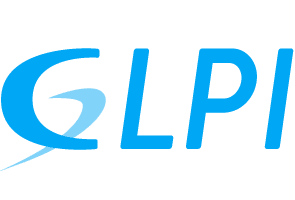by Polina Marishicheva | Feb 27, 2019 | Blog, News

Improve the approach and response from IT technicians to users in need with GLPI ITSM software! Manage requests, incidents, issues and changes easy and efficient with service management (service desk) feature.
A service desk is the single point of contact between the service provider (tech support specialists) and users seeking for help with routine questions. Many companies implementing service management software, because it provides great visibility and central control in dealing with IT issues to ensure the steady workflow.
The mechanism of this software is simple: users are creating “tickets”, usually it is a special form where they can describe the problem, attach images, documents, videos, etc. Once the form is completed, support agent is assigned to start working on resolving the described problem. Each stage of communication is displayed, so it is very easy to keep track of the problem solving.
Service Desk is a great tool for both tech specialists and users, for tech specialists it is easy and efficient way to manage and respond to users requests, for users it is a comfortable way of communication with tech support with ability to track the progress of the request.
Talking about Service Management, it impossible not to mention ITSM standards. ITSM standards is a the world’s most widely used framework of best practices for delivering IT services. The goal of this framework is to improve efficiency and achieve predictable service levels. The service assistance module of GLPI ITSM software meets these specific standards and is a perfect solution for companies of any size.
What are the main pluses of Service Desk tool?
1. Transparent communication
2.Effective time management
3.Shared expertise
4.Better user experience
5.Clear track of the workflow
Start automation of your business with GLPI ITSM software, which combines categorisation, escalation, service level agreement, impact, urgency, priority calculation, status standardization, validation request at several levels, and the implementation of automatic workflows based on business policies. To learn more about service management features of GLPI, please, read our article “ITIL V2 COMPATIBLE SERVICE DESK”.
by Polina Marishicheva | Feb 8, 2019 | Announcements, Unclassified
Thanks all users who has downloaded and tested release candidates, helped us to find bugs, fix issues. Together we are creating better software to manage IT infrastructure easily.
Let´s have a look at the main features of GLPI 9.4:
Search engine: nested criteria.

The search engine available in all lists of items now allows to construct much complex queries.
A new group button is available to separate a set of criteria from other ones. You can set a different operator for the entire group.
The resulting query will be surrounded by parenthesis.
We also added some minor changes to this part:
- A new type of search: notcontains.
- Changes can now be filtered with global rules.
- Review of the interface to make different actions clearer.
Note that your old saved searches (bookmarks) are still compatible with the new engine.
UX : Knowbase and FAQ.

The Browse tab in the knowbase have been revamped.
A tree is now displayed for the categories and each shows a badge counting the number of articles associated to the category.
Timeline for Changes and Problems.

Thanks to Curtis Conard, you can add followups to ITIL changes and problems and these object now have a timeline tab to regroup their followups, tasks, documents and solutions.
Followups split and Tickets merge.
Thanks to Curtis Conard, tickets now have 2 new actions:
- Split a followup: create a new ticket copying a followup (a link is kept in the old ticket)

- Merge a ticket as a new followup in an existing ticket with massive actions option.

Assets rules engine.

In this release, we provide a new rules engine to automatically update some fields when an asset is created or updated.
For example, you can assign a specific technician when a computer become a part of an entity.
Centralized command line tool.

The scripts folder provided in GLPI archives had a lot of scattered files. With this release, we started a console (available by the php bin/console command, see documentation)
centralizing old scripts. Not all scripts have been migrated but we will do the work step by step in futures releases.
Misc.
- Lock of user personalization tab.
- New action in business rules for tickets targeting the completename field (before, you can only target the short name of categories).
- New device type for assets: Modem.
- CAS 3 authentication support.
- Rich text option deleted (GLPI is now only in rich text in ITIL objects).
- A new field in user form: responsible (you can sync it with ldap server).
Under the hood.
We are working hard to have GLPI more stable and reliable.
Here is list of topics we did in this release :
- Code coverage for unit testing, since 9.2 with the addition of unit tests, we progress on the coverage of all source code.
- SQL Iterator, an old topic, GLPI framework provides a class to abstract SQL query generation. We replaced a lot of raw MySQL queries recently. The final goal is to permit the usage of others SQL engines (like Postgres). It’s not here actually, but we are on the road to do it.
- SCSS is now the official GLPI format for stylesheets. We have an automatic compiler for developers (use it, it’s css with superpowers) and also for plugins.
- Session as cache, like we did on 9.3, we store more and more in cache to provide you a speedy ITSM tool.
Download: on GitHub.








